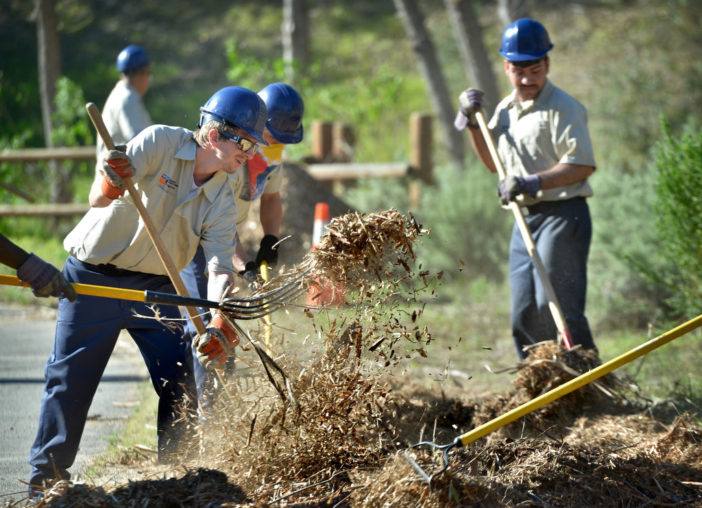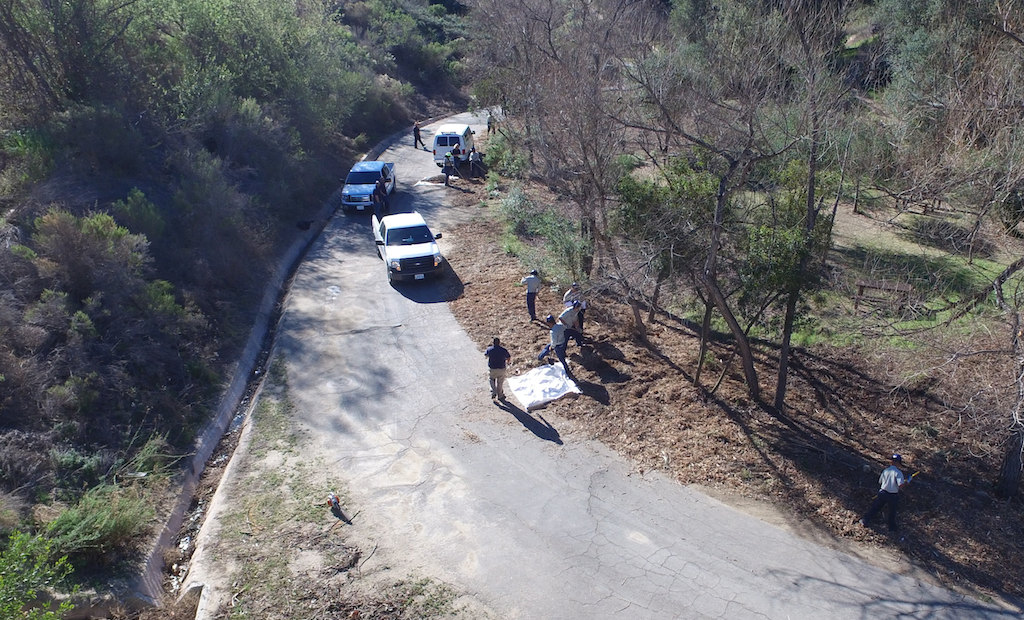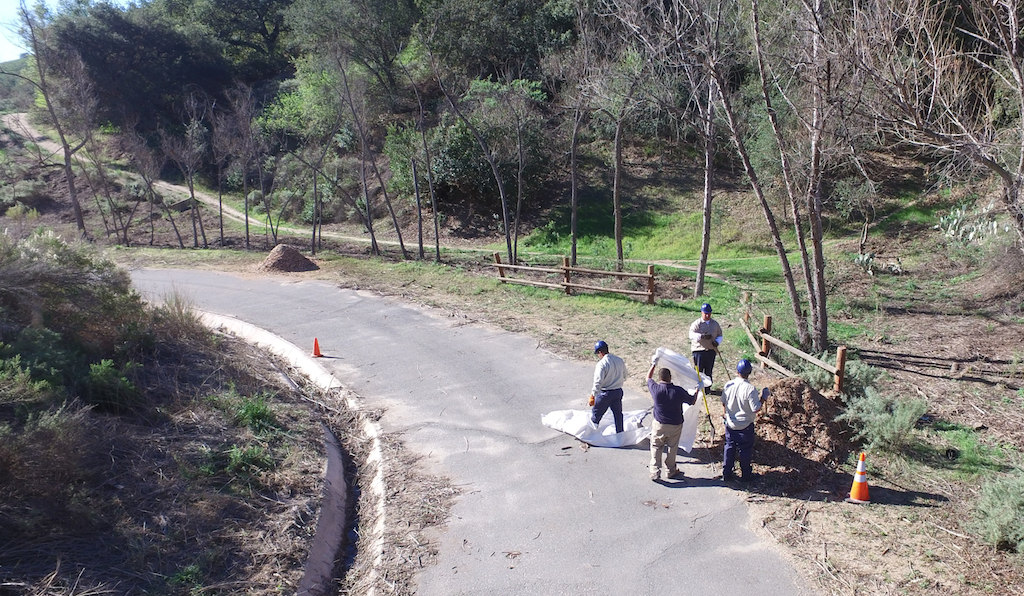A paved access road cuts through Deer Canyon Park in Anaheim.
On one side of a half-mile stretch of the road, non-native vegetation and dead brush has been removed, making the section clean and manicured.
On the other side, dead and dried-out weeds, brushes and trees remains — ideal fuel for a wildfire.
Beginning in January, three crews of eight to 10 members of the Orange County Conservation Corps, working under the guidance of Anaheim Fire & Rescue, started clearing out dead and non-native plants and brush from an area and slope in Deer Canyon Park that gets most of the sun.
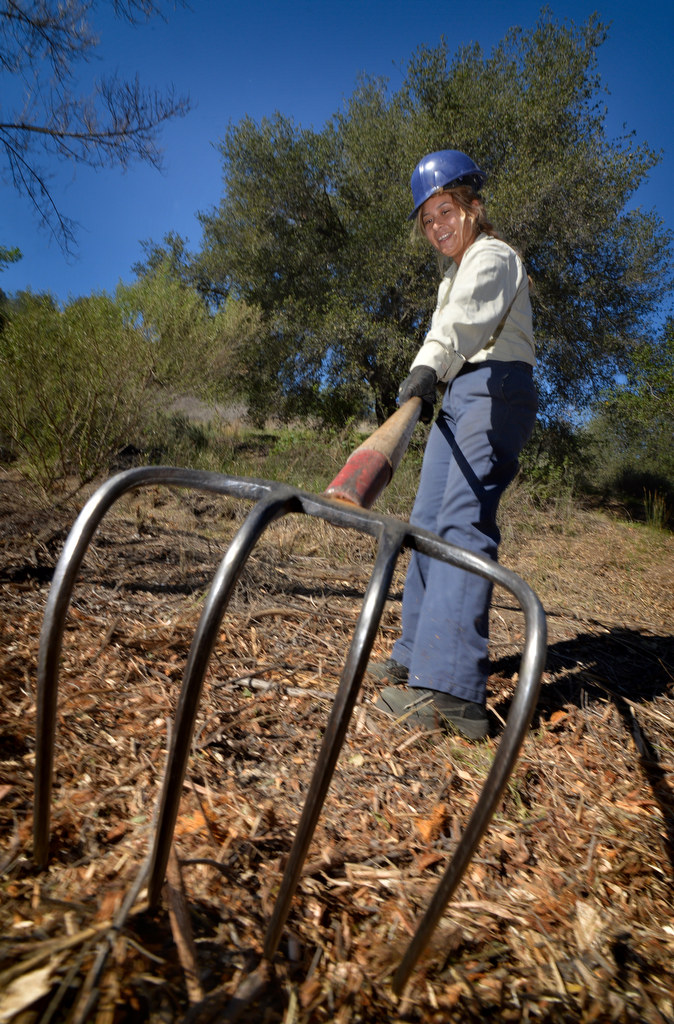
OCCC’s Oneyda Ventura, 22, of Santa Ana clears brush and spreads wood chips to discourage weeds from growing along a road in Deer Canyon Park in Anaheim.
Photo by Steven Georges/Behind the Badge OC
The project, on hiatus from mid-March to September to allow for the nesting season of the endangered subspecies least Bell’s vireo, a songbird, as well as the California gnatcatcher, is part of AF&R’s ongoing preventative efforts to make the city’s parks and wildland areas less hazardous following years of drought.
High above 130-acre Deer Canyon Park sits a large neighborhood along South Mohler Drive and South Timken Road — homes that would be seriously threatened if a fire were to erupt.
“These dry conditions are hazardous,” AF&R fire inspector Adrian Abel said as he and a handful of other colleagues recently watched the OCCC crew use rakes to smooth out dead-tree chippings as a drone, buzzing from overhead, captured some footage.
Abel is the wildland interface specialist for AF&R.
Jeremy Newton, project manager, Orange County Conservation Corps, which is one of only 13 state-certified local conservation corps in California, said much of Deer Canyon Park contains overgrown vegetation — hence the priority to clear it of parched brush.
“It’s a win-win for the community,” said Katharyn Muniz Bandoni, chief executive officer of the Orange County Conservation Corps & Charter School, which is based in Anaheim.
The OCCC, contracting with cities and other agencies, puts to work 18- to 25-year-olds who face significant barriers to achieve academic success and to escape poverty, including lack of stable housing, job readiness skills, and low self-esteem and confidence. They work on crews and in the classroom to earn their high-school diplomas.
Using rakes, chainsaws, weed whips and other tools, the OCCC crews are clearing brush from about one-third of Deer Canyon Park, including a steep slope that climbs to the backyards of homes. The project is expected to be completed by March 2017.
The OCCC crews, wearing tan shirts and matching blue helmets and pants, toil from 7 a.m. to 2 p.m. (with a lunch break) before classes in the evening. They target dry brush and non-native vegetation including pampas grass, palm trees, mustard grass, arundo donax (a giant reed), fennel, artichoke thistle and Russian thistle.
“We’re making this look nice and pretty,” said Shanelle Simmons, an OCCC member who recently was working on Deer Canyon Park. “I don’t know about this being ‘fun,’ but it’s great exercise.”
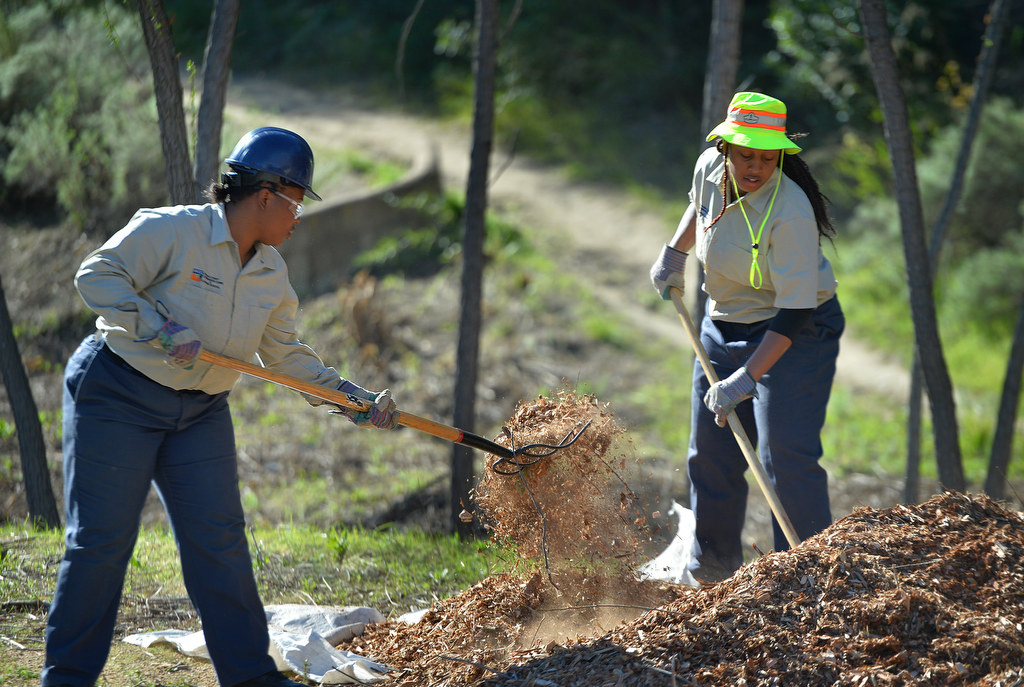
OCCC crewmates Shanelle Simmons (left), 22, and her sister Michelle Simmons, 20, both from Santa Ana, help clear brush before the wildfire season and spread wood chips along the road at Deer Canyon Park.
Photo by Steven Georges/Behind the Badge OC
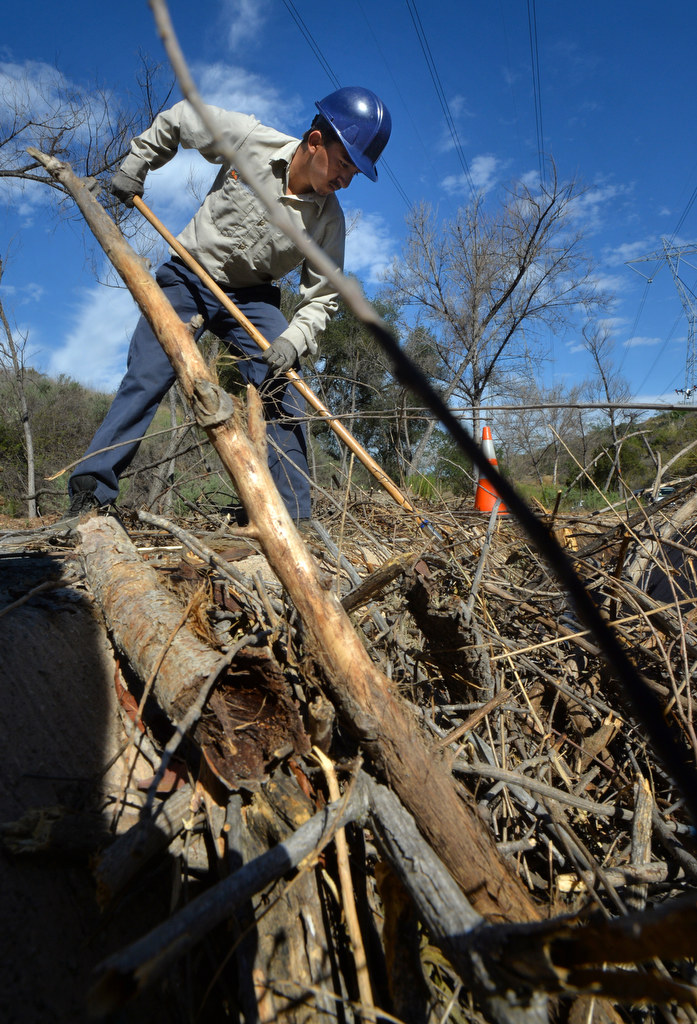
OCCC’s Raymond Vasquez, 18, of Santa Ana clears out the brush from a drainage ditch that runs along a road at Deer Canyon Park in Anaheim.
Photo by Steven Georges/Behind the Badge OC
 Behind the Badge
Behind the Badge
